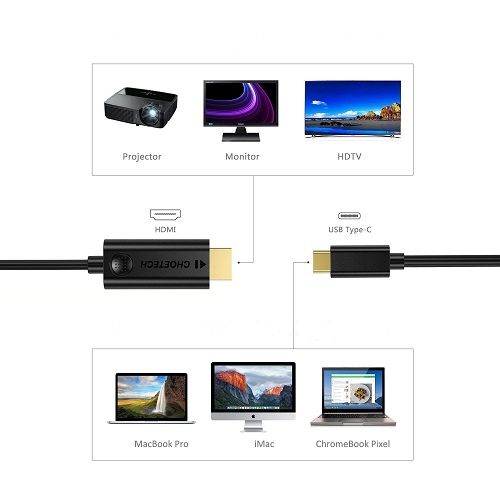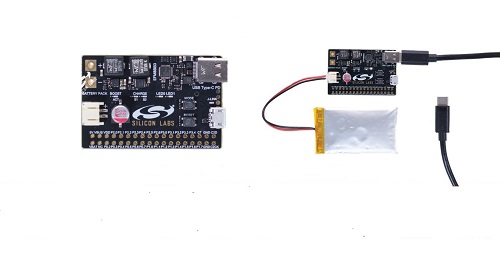A diverse array of portable devices — wireless speakers, drone cameras, VR headsets, and motorized medical devices — is counting on the simplicity of USB Type-C connectors to reinvigorate the charging and transfer of multimedia data streams.
The USB Type-C interface, which specifies reversible plug orientation and cable direction, simplifies attaching and powering a wide range of battery-powered devices. And it consolidates support for a broad range of interface technologies, including DisplayPort, HDMI, and Thunderbolt (Fig. 1 ).

Fig. 1: USB Type-C is quickly becoming a gateway for connecting a multitude of devices with different power supply requirements. Image source: Cypress Semiconductor.
USB Type-C and power delivery standards are gaining rapid support while catering to power-source applications such as AC adapters and power supplies, power hubs, docking stations, smart plugs, and displays. But behind this slim and sleek connector world lies complex interface electronics battling with issues like power delivery negotiations, built-in protections, power-sharing algorithms, and so on.
In this article, we take a closer look at how the USB Type-C ecosystem is quickly evolving and how a new breed of power and interface chips is facilitating the transition from USB Type-A, USB Type-B, and USB Micro-B devices. It especially delves into single-chip solutions that promise to lower component count and shrink board real-estate.
Managing power sources
Chipmakers, for instance, are adding intelligent battery algorithms to enable smaller form factors and faster battery charging alongside a new generation of bidirectional voltage regulators that accept input power from a wide range of DC power sources: AC/DC power adapters, travel adapters, and power banks.
The chips convert a broad array of DC power sources to a regulated voltage at the power adapter input. Intersil’s new buck-boost voltage regulator is a case in point: It supports the USB Type-C ecosystem with buck mode, boost mode, and buck-boost mode, providing ample flexibility for multiple ports and input sources.
The single-chip ISL95338 solution replaces two voltage converters currently used for the bidirectional buck and boost modes and reduces the BOM cost of a USB Type-C design by 50%. It employs Intersil’s R3 modulation technology to deliver light-load efficiency and ultra-fast transient response.

Fig. 2: USB Type-C is becoming a universal adapter for data transport and power supply for a wide array of devices. Image source: Texas Instruments.
Next, Texas Instruments has added intelligence to its battery charging controllers via maximum power point tracking technology. Its battery algorithm automatically detects the full capacity of input power to optimize current. That allows battery charge controllers to support wide input and output voltage ranges and more compact adapter designs.
The controller chip also helps maintain a consistent system and charging current to ensure the utilization of maximum input power. TI’s buck-boost battery charge controllers for one- to four-cell (1S to 4S) designs — bq25703A and bq25700A — promise seamless transition between different modes in the buck and boost operation without any dead zone.
The Dallas, Texas-based chipmaker is targeting these charge controllers for USB Type-C ports in devices such as notebooks, tablets, power banks, drones, and smart home applications.
The BOM savings
The USB Type-C products — powered by two-series battery packs — require multiple discrete components. And it adds to BOM costs and introduces additional points of failure within the circuit. Maxim Integrated claims to have eliminated the patchwork of chips by integrating a charger detector, boost/buck converter, and Li-ion battery charger with a smart power selector on a single chip.
The new chip for USB Type-C designs streamlines the charger architecture by drawing the maximum current that the charging adapter can supply while facilitating 28-V overvoltage protection. The MAX14748 chip enables USB Type-C charging at twice the power of Micro-USB solutions.
Meanwhile, Silicon Labs has released a reference design to simplify the development of USB Type-C rechargeable lithium-ion battery packs. The design solution includes a development board, USB Type-C power delivery (PD) stack, example code, schematics, and a hardware manual.

Fig. 3: A View of the USB Type-C battery pack reference design. Image source: Silicon Labs.
The reference design (Fig. 3 ) is aimed at providing developers with complete control over the battery application for negotiating a variety of power schemes. The PD stack, for example, enables designers to create high-level function calls in order to negotiate and convey USB Type-C messages to send or receive power.
USB Type-C ecosystem
The designs built around USB Type-C connectors and ports are going to require a lot of chipsets in 2018. And the key challenges are likely to be centered around cost, PCB size, and power management.
The USB Type-C ecosystem also demands a new set of debugging and test tools. Take MIPI Alliance, which has recently updated its Narrow Interface for Debug and Test (NIDnT) specification to accommodate USB Type-C technology.
USB Type-C is the interface technology of choice for multi-cell battery-operated devices such as smartphones, laptops, tablets, drones, and home automation appliances. So expect a lot more action in 2018, very likely the year of transition toward USB Type-C cables and connectors.
Advertisement
Learn more about Electronic Products MagazineMaxim Integrated





